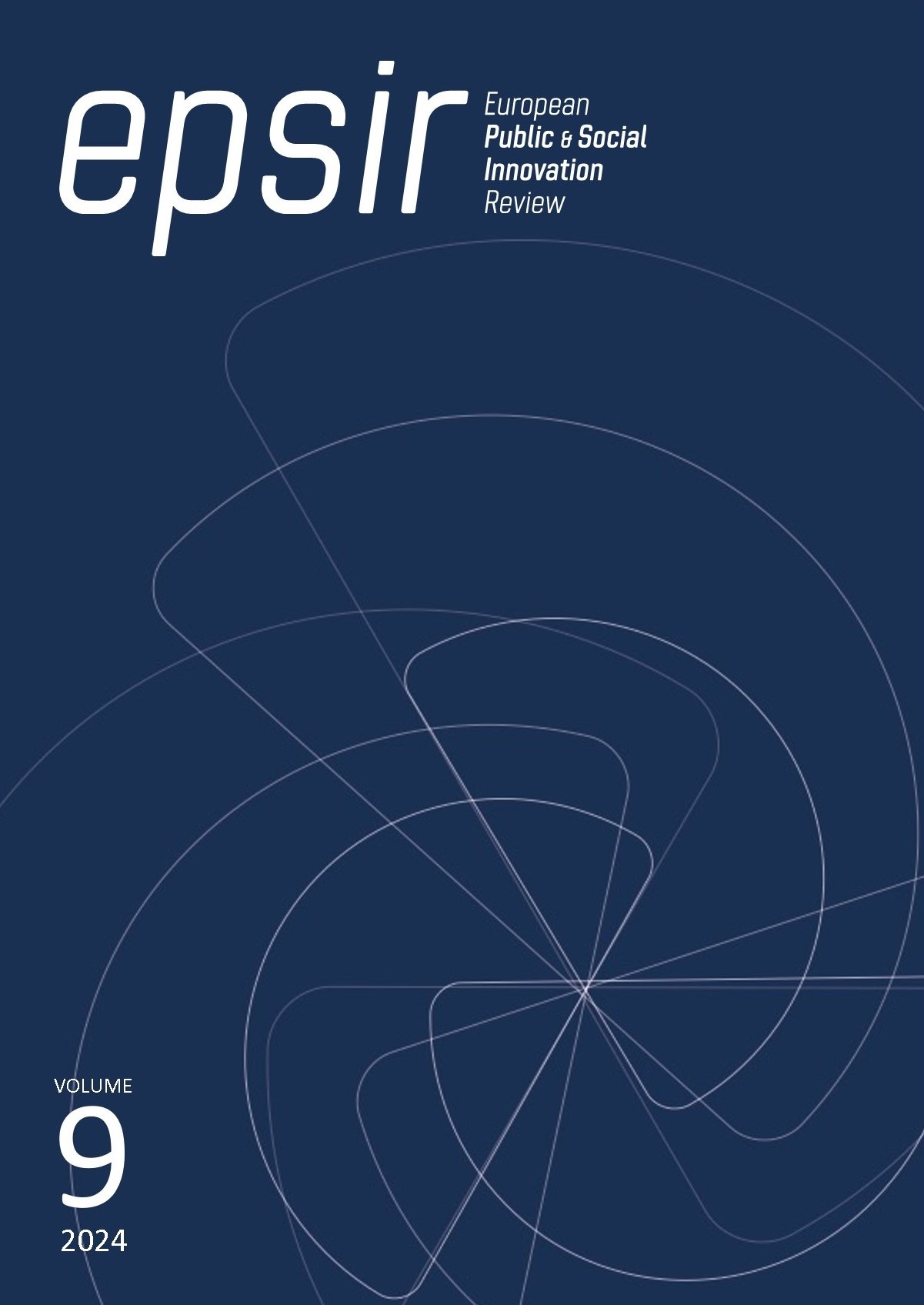Electronic document management models in higher education institutions
DOI:
https://doi.org/10.31637/epsir-2024-939Keywords:
electronic documents, document management, systematic review, higher education, management models, good practices, policies, digital preservationAbstract
Abstract: Introduction: This article aims to explore models, references, or best practices in the management of electronic documents in higher education institutions through a systematic review. Methodology: The literature review was conducted using the Systematic Literature Review (SLR) protocol proposed by Kitchenham et al. (2009). Results: Results: 667 articles were found in 4 academic databases. Then, 25 articles were accepted and finally the works most closely related to the review object were selected. Discussion: The research identified models, references, best practices, proposals, and recommendations that contribute important components to the management of electronic documents in higher education institutions. Conclusions: There is no single or specific model for the management of electronic documents in higher education institutions. This will depend on government regulations, the policies of each institution, and the documentary reality of the institution. The management of electronic documents is advancing and transforming with the support of technology, but there needs to be more integration of processes and greater awareness for long-term digital preservation to avoid the loss of the documentary heritage of higher education.
Downloads
References
Archivo General de la Nación. (s.f.). Gestión de Herramientas de la Política del AGN. https://www.archivogeneral.gov.co/caja_de_herramientas/transformar.php
Archivo General de la Nación. (2021). Hoja de ruta para la gestión de documentos electrónicos en el marco de la automatización. rb.gy/yiawgb
Archivo General de la Nación. (2020). Sistema de Gestión de Documentos Electrónicos. rb.gy/tl430n
Balboa, M. y Medina, G. (2022). Gestión documental y transformación digital en el estado de Chile: un estudio de caso. Amoxtli, 7(mayo). https://doi.org/10.38123/amox7.204 DOI: https://doi.org/10.38123/amox7.204
Cantero, M. J. (2023). El archivo, el archivero, el gestor documental, la administración electrónica y la transformación digital. Revista Desiderata, 21, 134-136. https://dialnet.unirioja.es/servlet/articulo?codigo=8754524.
Castillo Solano, M. G. y Umaña Alpízar, R. (2020). Modelo para la preservación de documentos digitales 1 Model for the Preservation of Digital Documents. Revista Del Archivo Nacional, 83(12), 129-182. https://www.dgan.go.cr/ran/index.php/RAN/article/view/453
Chaputula, A. H. (2022). E-records management practices in public universities: a developing country perspective. Records Management Journal, 32(3), 213-230. https://doi.org/10.1108/RMJ-06-2021-0027. DOI: https://doi.org/10.1108/RMJ-06-2021-0027
Jannah, R., Rizkyana, F. W. y Budiantoro, R. A. (2023). Audit of A Web-Based Electronic Documents and Record Management System (WEDRMS): Oversight Efforts to Improve Administration in Higher Educational Institutions. BISECER (Business Economic Entrepreneurship), 5(2), 53. https://doi.org/10.61689/bisecer.v5i2.427 DOI: https://doi.org/10.61689/bisecer.v5i2.427
Kataev, M. y Bulysheva, L. (2022). Blockchain system in the higher education: Storing academical students’ records and achievements accumulated in the educational process. Systems Research and Behavioral Science, 39(3), 589-596. https://doi.org/10.1002/sres.2872 DOI: https://doi.org/10.1002/sres.2872
Khurshed T, M., Khurshed A, K. y Parviz A, S. (2020). Experience in Development and Implementation of an Information Management System in a Technical University. ITM Web of Conferences, 35. https://doi.org/10.1051/itmconf/20203502005 DOI: https://doi.org/10.1051/itmconf/20203502005
Kitchenham, B., Pearl Brereton, O., Budgen, D., Turner, M., Bailey, J. y Linkman, S. (2009). Systematic literature reviews in software engineering – A systematic literature review. Information and Software Technology, 51(1), 7-15. https://doi.org/10.1016/j.infsof.2008.09.009 DOI: https://doi.org/10.1016/j.infsof.2008.09.009
Malekani, A. W. (2023). Examining the efficacy of Electronic Document Management System and Employees’ Perceptions of its Usefulness at Sokoine University of Agriculture. University of Dar Es Salaam Library Journal, 18(1), 112-133. https://doi.org/10.4314/udslj.v18i1.8 DOI: https://doi.org/10.4314/udslj.v18i1.8
Marín Gómez, A. R. (2019). Camino a la Gestión Documental Electrónica de Archivo (GDEA). El caso la Universidad Nacional de Colombia - Sede Medellín, 2015-2018 [Tesis de maestría, Universidad Nacional de Colombia]. Repositorio Universidad Nacional. https://repositorio.unal.edu.co/handle/unal/77064
Metto, E., Benson N, K. y Miriam, M. (2022). A Model for Effective Management of Students Records in the Academic Registrars’ Offices in Kenyan Universities. African Journal of Empirical Research, 3, 78-89. https://ajernet.net DOI: https://doi.org/10.51867/ajernet3.1.7
MINTIC, I. C. (2019). Modelo de Madurez para la Transformación Digital Innpulsa Colombia-Innpulsa Digital MINTIC-Dirección de transformación digital. rb.gy/f22kiq
Paucar-León, V. J., Molina-Granja, F., Lozada-Yánez, R. y Santillán-Lima, J. C. (2022). Model of Long-Term Preservation of Digital Documents in Institutes of Higher Education. En L. Uden, I. H. Ting, B. Feldmann (Eds.), Knowledge Management in Organisations. KMO 2022. Communications in Computer and Information Science (Vol. 1593, pp. 257-269). Springer, Cham. https://doi.org/10.1007/978-3-031-07920-7_20 DOI: https://doi.org/10.1007/978-3-031-07920-7_20
Sánchez Vera, C. E. (2022). Propuesta de diseño conceptual para el sistema de gestión de documentos electrónicos de archivo. Caso: Universidad Surcolombiana [Tesis de maestría]. Universidad de la Salle. https://ciencia.lasalle.edu.co/maest_gestion_documental/88
Wohlin, C., Runeson, P., Höst, M., Ohlsson, M. C., Regnell, B. y Wesslén, A. (2012). Experimentation in Software Engineering. Springer Berlin Heidelberg. https://doi.org/10.1007/978-3-642-29044-2 DOI: https://doi.org/10.1007/978-3-642-29044-2
Zambrano Plúa, I. E., Quindemil Torrijo, E. M. y Rumbaut León, F. (2021). Gestión documental en universidades: Una mirada desde Latinoamérica. ReHuSo: Revista de Ciencias Humanísticas y Sociales, 6(Especial), 108–119. https://doi.org/10.33936/rehuso.v6iEspecial.3779 DOI: https://doi.org/10.33936/rehuso.v6iEspecial.3779
Downloads
Published
How to Cite
Issue
Section
License
Copyright (c) 2024 Carolina Lozada Ávila, Luisa F. Villa

This work is licensed under a Creative Commons Attribution-NonCommercial-NoDerivatives 4.0 International License.
Authors who publish with this journal agree to the following terms:- Authors retain copyright and grant the journal right of first publication with the work simultaneously licensed under Creative Commons Non Commercial, No Derivatives Attribution 4.0. International (CC BY-NC-ND 4.0.), that allows others to share the work with an acknowledgement of the work's authorship and initial publication in this journal.
- Authors are able to enter into separate, additional contractual arrangements for the non-exclusive distribution of the journal's published version of the work (e.g., post it to an institutional repository or publish it in a book), with an acknowledgement of its initial publication in this journal.
- Authors are permitted and encouraged to post their work online (e.g., in institutional repositories or on their website) prior to and during the submission process, as it can lead to productive exchanges, as well as earlier and greater citation of published work (See The Effect of Open Access).



